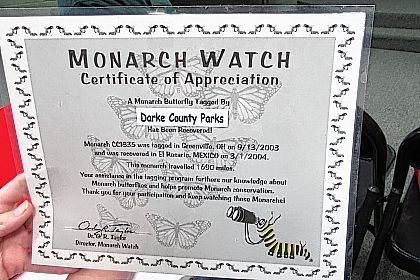
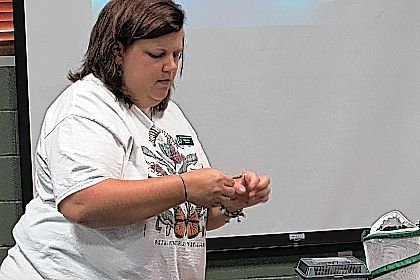
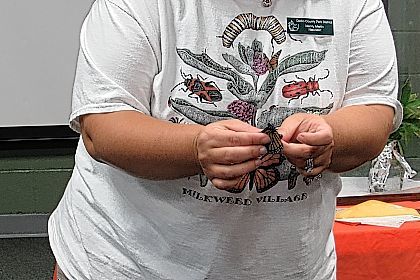
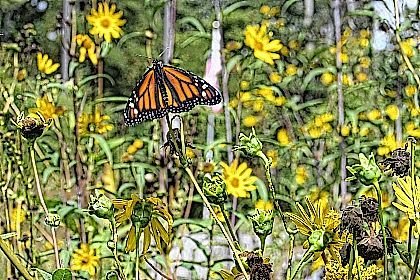
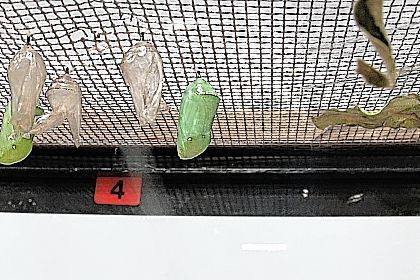
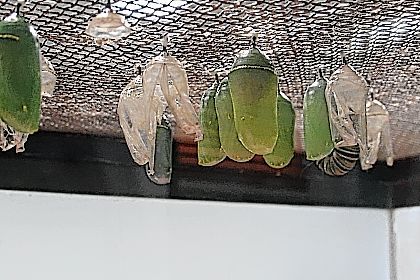
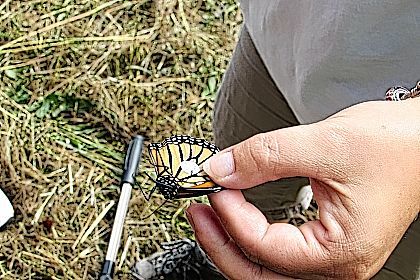
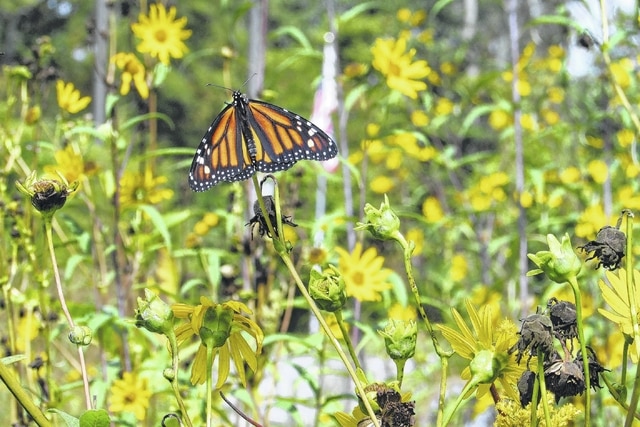
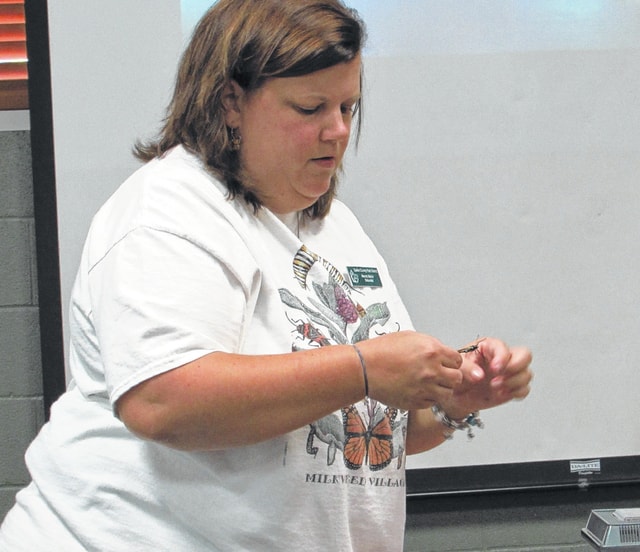
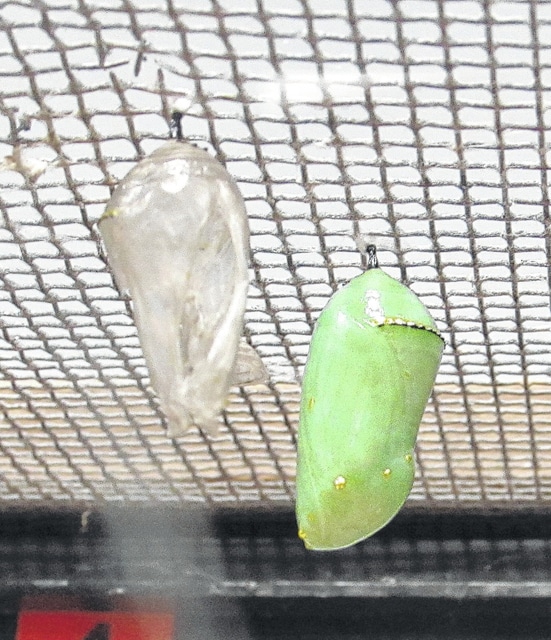
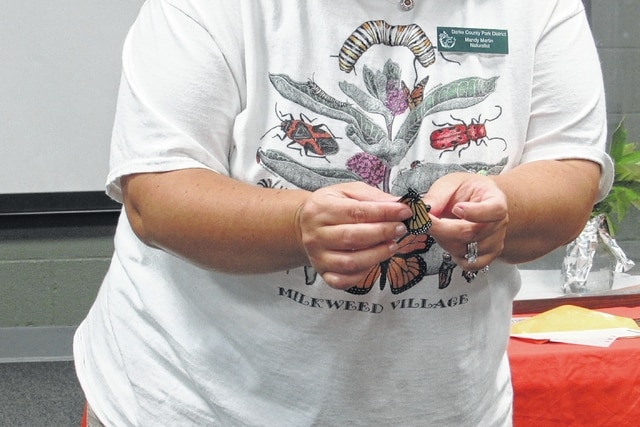
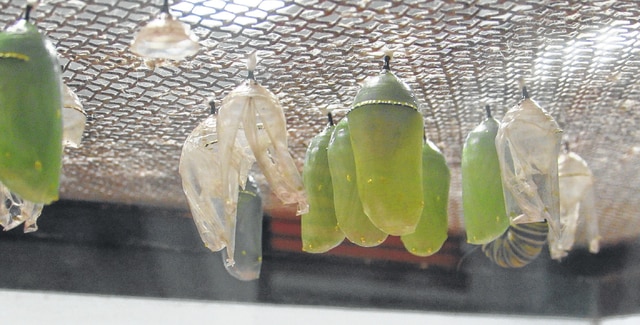
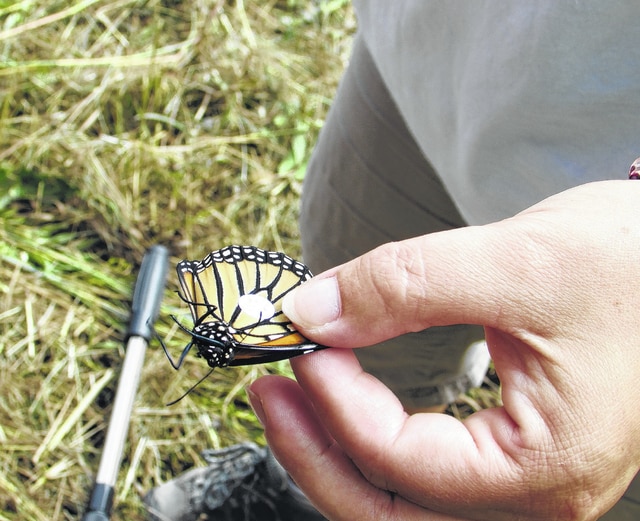
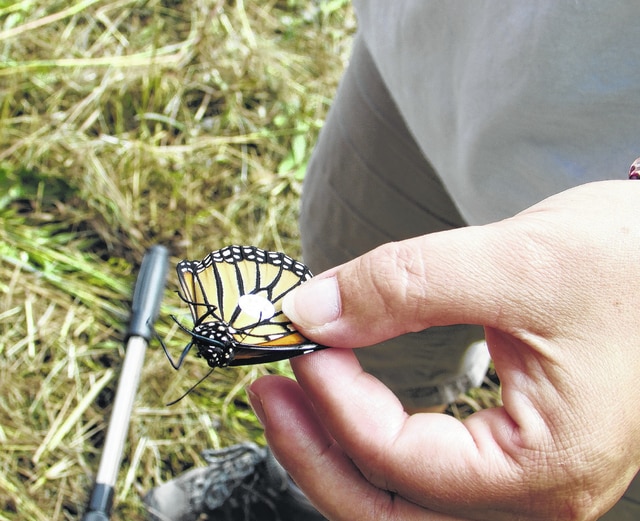
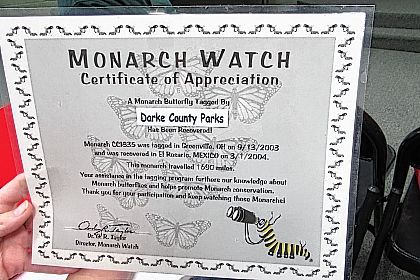
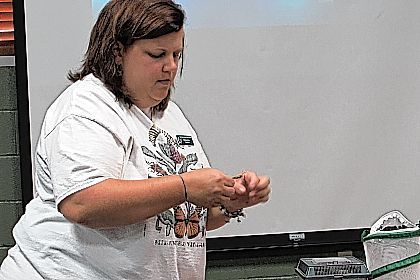
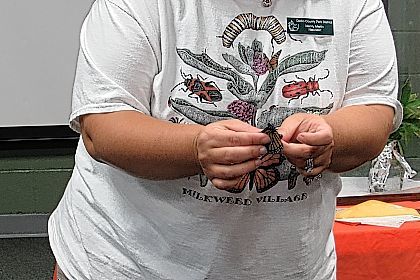
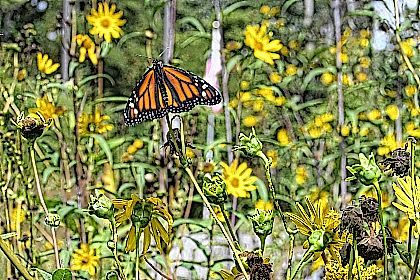
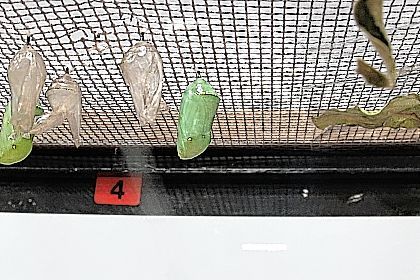
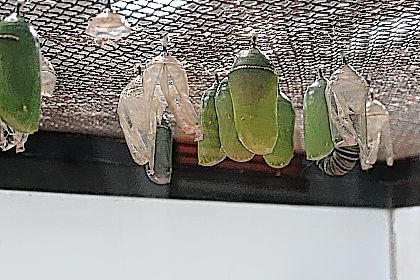
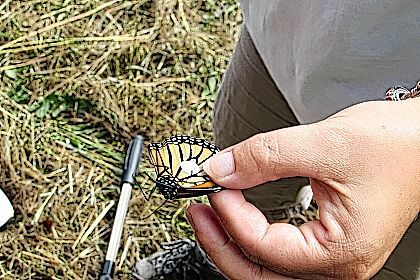
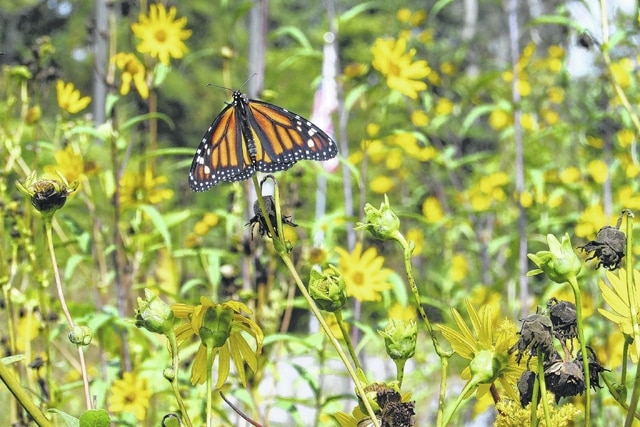
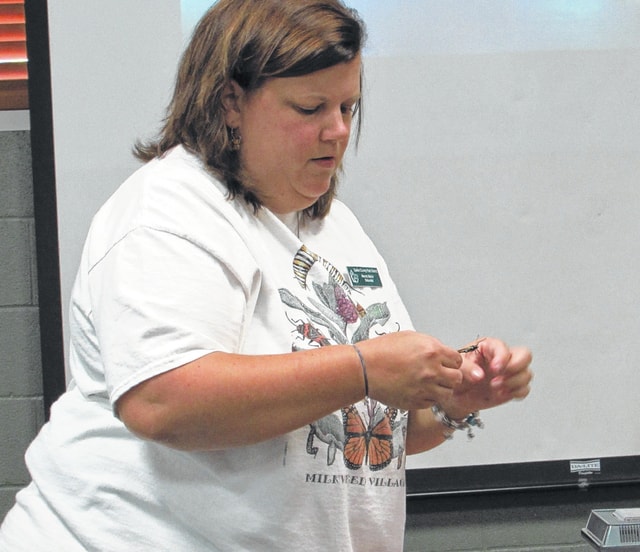
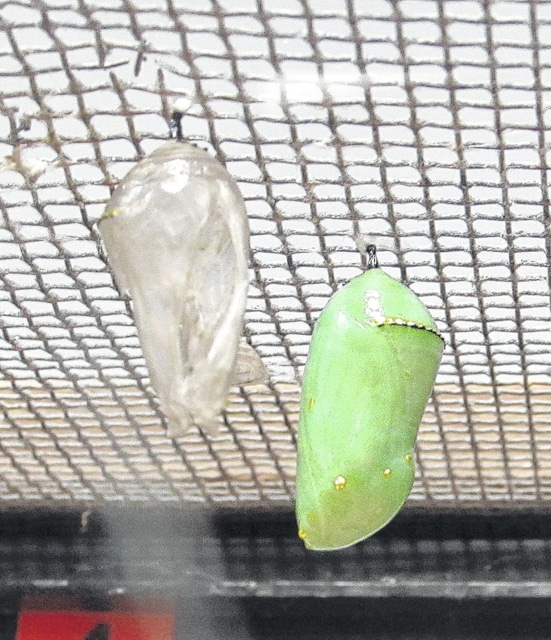
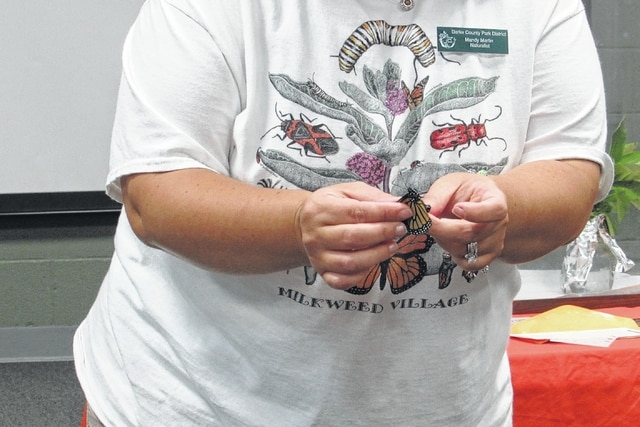
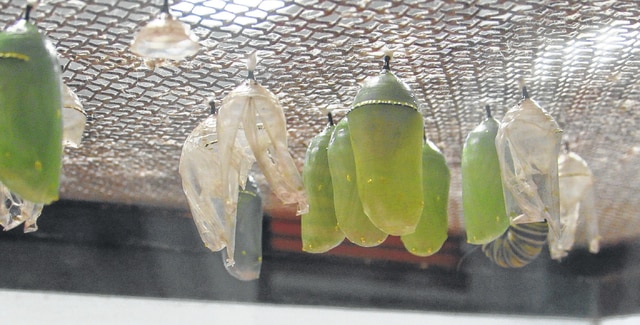
GREENVILLE — Those fluttering beauties with the distinct orange and black wings you see in your garden are only at the beginning of a journey of a thousand miles or more.
Darke County Parks Naturalist Mandy Martin presented a program at Shawnee Prairie Preserve Saturday afternoon on the life cycle of the monarch butterfly. The program is presented once a year in the fall, as the monarchs emerge in Darke County.
Monarchs begin as a tiny egg smaller than a pinhead of 300-500 eggs laid by a single female over the course of a couple of weeks before she dies. The egg is off-white or yellowish in color with ridges from base to tip and usually attached to the underside of a leaf near the top of the plant. The egg, laid individually on leaves of milkweed, hatch into a tiny caterpillar after only about four days, and immediately it begins feeding, first on the egg shell and then on the leaf.
The caterpillar has six true legs as well as five pairs of “prolegs,” which are the suction-cup like legs that enable to cling to the leaves. The caterpillar molts, or sheds its skin, as it grows from smaller than a grain of rice to up to 4.5 centimeters long with vivid stripes of black, yellow and white.
“If humans grew like monarch caterpillars, we’d be the size of a bus,” Martin said.
This transformation takes place over the course of only about two weeks when the caterpillar is basically doing nothing but eating. It then spins tiny silk-like, sticky threads and attaches itself to the underside of a surface, hanging in a J-shape as it begins its transformation into chrysalis.
The caterpillars begins to develop a green color, and the chrysalis forms as a hard, jewel-like, jade-colored pouch trimmed with a ridge of gold-colored beading near the top. This vibrant, regal appearance of the chrysalis is what inspired the name of the monarch, Martin said.
The pale green darkens over a couple of weeks and the pattern of the wings can begin to be seen through the shell of the chrysalis. When it is fully formed, the butterfly emerges with soft wings and an enlarged, swollen body filled with fluids. The fluid begins to circulate through the wings and solidify them after emergence. The adult monarchs feed on the nectar of flowers.
Monarchs born in the spring and early summer live only about three to five weeks, but monarchs born in the fall have a much longer life span of eight or nine months and a long journey ahead. Fall monarchs migrate more than a thousand miles to the fir forests of Mexico where the congregate by the thousands, turning the green forests to orange as they rest to begin a new cycle.
Martin said those monarchs that migrate to Mexico travel up to the Gulf Coast states to lay their eggs. Those monarchs then journey north to the Midwest. Those monarchs born west of the Rockies migrate up and down along the West Coast.
Martin showed a certificate from Monarch Watch, a monarch tracking program operated by the University of Kansas, documenting that a monarch she tagged in the fall of 2003 was found and recorded in Mexico in the spring of 2004, after a journey of 1,690 miles.
Monarchs are tagged with small numbered stickers that are carefully placed on the underside of a wing. During the program, Martin tagged one monarch she had raised herself as well as two she caught while the group walked for a butterfly watch outside.
Martin explained that attracting monarchs to your own backyard is as simple as planting milkweed.
“If you build it, they will come,” she quipped.
Monarch numbers dropped by nearly 80 percent in 2013, due in large part to the eradication of the common milkweed, an invasive plant, by farmers, as well as a cold snap in Mexico and drought in Texas. The numbers are now rebounding thanks to efforts to plant milkweed in the Midwest (other varieties of milkweed are suitable for monarchs and are not invasive), and more favorable weather conditions in the South.
For more information about raising and tracking monarchs, visit www.monarchwatch.org or www.monarchjointventure.org.

















